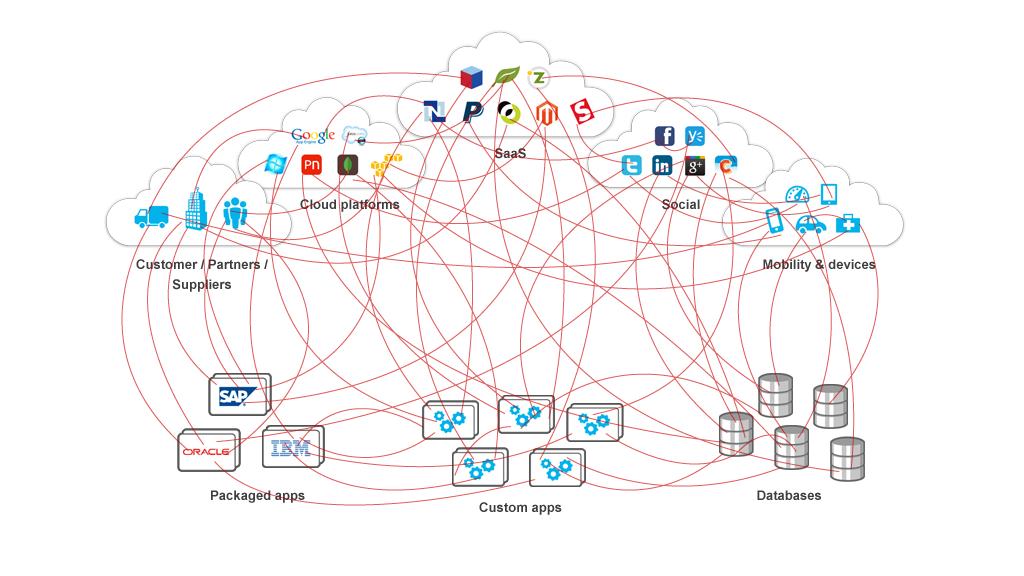How to Implement an Enterprise Digital Skills Platform in Your Organization
The modern business landscape is rapidly evolving, driven by rapid technological advancements. As a result, organizations must equip their employees with the necessary digital skills to stay competitive and relevant. Implementing an enterprise digital skills platform can be a powerful solution to address this need and foster a continuous learning and development culture within your organization. This post will explore the key steps and considerations for successfully implementing such a platform. Let's dive in!
1. Assessing your Organization's Needs:
Before delving into implementing an enterprise digital skills platform, it is crucial to comprehensively assess your organization's specific requirements. Pro-tip: You must go through reviews and recommendations of popular leading enterprise digital skills development platforms like Cloud Academy reviews before going ahead with an option.
a. Identify skill gaps: Conduct thorough assessments or surveys to accurately understand the existing skill sets within your workforce. Identifying priority areas where digital skills are lacking will help shape your training program effectively.
b. Determine organizational goals: Align your digital skills strategy with your overall business objectives. By understanding which competencies are necessary for moving forward, you can focus on training that directly impacts productivity and innovation.
2. Selecting the Right Platform:
Numerous platforms are available for managing digital skills development in an enterprise setting; it is essential to choose one that aligns with your organization's unique needs.
a. Consider scalability: Ensure that the chosen platform allows seamless scalability as your organization evolves over time. This way, you won't outgrow it or face additional costs for transitioning to another system in the future.
b. Emphasize user experience: An intuitive user interface is crucial for ensuring high engagement and uptake within your workforce. Choose platforms that prioritize usability and provide a seamless learning experience across devices.
c. Change management capabilities: A robust enterprise digital skills platform should include features that effectively support change management initiatives, such as tracking progress or providing recommendations based on individual learning paths.
3. Designing Customized Training Programs:
Once you have identified the right platform, it's time to design tailored training programs that address your organization's specific digital skill needs.
a. Define learning objectives: Clearly outline the desired outcomes you hope to achieve through each training program or module. This will provide a sense of direction and enable participants to understand their progress and development.
b. Curate relevant content: Leverage internal and external resources to curate a comprehensive library. A mix of multimedia formats – such as videos, articles, and interactive tutorials – ensures varied and engaging learning experiences.
c. Utilize gamification elements: Incorporate gamification features into the learning platform to make the training more enjoyable for participants. Elements like badges or leaderboards can incentivize participation and foster healthy competition in skill development.
4. Implementing & Launching the Platform:
Once your customized training programs are designed, it's time to implement and launch the enterprise digital skills platform across your organization.
a. Communication is key: Communicate openly with all stakeholders regarding the implementation timeline, expectations, benefits, support resources, and any necessary software downloads or hardware configurations.
b. Provide ample support: Ensure that a dedicated support system is in place so that users can seek assistance within the platform whenever they face challenges or have questions throughout their learning journeys.
c. Track progress & measure results: Regularly monitor the engagement levels, completion rates, learner feedback, and improvement in their digital competencies. Analytics capabilities incorporated within the chosen platform will help you gain detailed insights for performance evaluation purposes.
Important Things to Remember:
a. User Engagement: To promote frequent use, make sure the platform is interesting and easy to use.
b. Material Quality: Select a platform that provides pertinent, high-quality material.
c. Scalability: Choose a platform that can expand to meet the demands of your company.
d. Security: Verify that the platform satisfies the security and compliance standards of your company.
Putting in place an enterprise digital skills platform is a smart move that may greatly improve the capabilities of your company.
Conclusion
Embracing digitalization demands a continuous focus on cultivating employee competencies aligned with organizational goals. By implementing an enterprise digital skills platform tailored to your organization's needs, you are empowering employees with knowledge acquisition opportunities that will enable them to stay competitive in this fast-paced world.
In addition to filling up skill gaps now, creating an atmosphere of continual learning and development also helps your staff get ready for new problems down the road. Purchasing a digital skills platform will benefit your company in the long run by fostering creativity, productivity, and a competitive edge in an increasingly digital environment.
Assess your needs thoroughly, choose wisely among various platforms available, design custom training programs, carefully launch them across your organization, and measure their impact; this is the recipe for success in building a digitally fluent workforce. So go ahead, dive into the world of digital skills development, and witness the transformative power it can bring to your organization!







